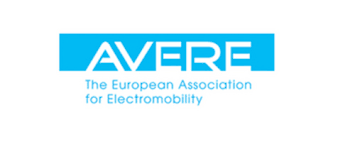
AVERE Secretary General Philippe Vangeel speaks in an interview with IMET Initiative about his vision of the cities of the future and the contribution of AVERE to foster the uptake of mass e-mobility in local realities.

What is your vision on cities of the future?
With COVID-19 and the subsequent lockdowns across European cities, for the first time, we started to see the air quality increase substantially. However, we need to ensure that we keep this decarbonisation momentum and cities are key to achieving this vision.
Looking at transportation, this means widespread access to emission-free e-mobility is the only perfect, effective and readily-available solution to deliver on these goals. Electric vehicles are zero-emissive and do not produce pollutants like NOX and fine particles. Local governments can do a lot to promote their use while at the same time curb emissions from fossil fuel vehicles.
A number of European capitals have already set the year when they plan to become carbon-free cities, in a range mostly spanning between 2020 and 2035, and many of them have already established Zero-Emission Zones. Local programs have been developed by support of our members to stimulate electric mobility through, for example, easier access to charging infrastructure. These types of incentives can go hand-in-hand with national incentives, like tax deductions on the purchase of EVs.
Cities are and will be a pivotal element in our fight against climate change. With their transition to zero-emissions transportation, they are contributing significantly to help this cause while improving the quality of life of their citizens.
How does AVERE contribute to this vision?
AVERE is the only European Association for Electromobility. Our mission is to support the mass uptake of zero-emission mobility across Europe and the world.
We operate across European, national, regional and local levels, all of which are deeply interconnected. Importantly, they must work together so that policies at all levels can support industry in producing zero-emission vehicles and provide incentives to consumers to purchase them.
"Our mission is to support the mass uptake of zero-emission mobility across Europe and the world."
Our work entails, at a broader level, working towards European legislation that applies across Europe. AVERE ensures that there is real support of the production and purchase of electric vehicles (EV). But also that EV users have access to similar services and infrastructure across Europe. This is of course necessary for the mass uptake of e-mobility in general, and definitely for cities.
Looking at cities specifically, AVERE focuses on sharing best practices by highlighting the most virtuous local programs that have truly supported e-mobility and allowed it to thrive in large municipalities. We do this through our contribution to European projects and international networks while our Members are key to supporting this overarching vision on the ground across Europe. They help us to identify best-practices and lessons learned so that we can showcase them internationally with policymakers.
Why did you join the IMET initiative?
The IMET initiative provides a holistic approach for the integration of electric mobility inside a broader framework for the transition towards clean energy. This approach is very much aligned with AVERE’s goal of a shift to clean mobility based on maximising efficiencies from sector integration. For example, we believe that the mass uptake of electromobility needs to go hand-in-hand with the development of clean and efficient electrification. Only with a well-integrated energy and transport system based on renewables can we ensure that we meet the EU’s long-term decarbonisation goals.
"Only with a well-integrated energy and transport system based on renewables can we ensure that we meet the EU’s long-term decarbonisation goals."
Could you mention some concrete examples of actions you have taken?
AVERE is engaged in a number of projects that foster the uptake of mass e-mobility in local realities. One of the most prominent examples is the SEEV-4City project, an innovative project funded by the EU Interreg North Sea Region Programme. Its main objective is to demonstrate that smart electric mobility solutions can be integrated with renewable-energy sources so to promote its take-up in cities.
The project explores the integration of e-mobility charging infrastructure with Vehicle-to-Grid solutions and renewable energy sources through pilots across six cities in the North Sea region. The results of these pilots are now used for further development of smart mobility integration across more cities.
Another important project is the European Alternative Fuels Observatory (EAFO). This private-public-partnership, of which AVERE is a partner of, analyses the registration of charging points and electric vehicles across Europe. On top of this, it assesses each European Member State’s commitment via their respective policy frameworks, towards reaching their goals of zero emission charging infrastructure by 2020. As such, this tool is essential in providing an overview of the amount of charging infrastructure across Europe, and at a more granular level, within cities.
Finally, on November 17 & 19, AVERE is also hosting the AVERE E-mobility Conference 2020 (AEC2020). This year, the digitally hosted event will address how to make e-mobility mainstream by 2025. The event will include the perspective of consumers, manufacturers, and policymakers, on how to support the transition to the mass uptake of zero-emission mobility.
In your opinion, what policy developments at EU level will most efficiently support the mass uptake of electromobility?
The overarching Green Deal is one of the initiatives that will support Europe’s long-term decarbonisation efforts. For the decarbonisation of the transport sector, the increase of the EU’s ambition for CO2 targets for cars, vans and trucks will be key to ensure that Europe’s zero emission goals are met. Within this context, the potential to assess the increase of the file’s ambition will be a crucial topic ahead of its revision in the coming year. This has to include the potential for developing a phase out for internal combustion engine vehicles and setting a higher mandate for zero emission vehicle uptakes. The positive impact on air quality and emission levels at international, regional, and local levels are substantial.
In terms of other supportive legislative topics which will be at the top of the transport decarbonisation agenda, an important priority is the upcoming revision of the Alternative Fuel Infrastructure Directive (AFID). This will help ensure that the infrastructure supporting electric vehicles will be fit for purpose for the coming five to ten years.
The other very key piece of legislation in the near future is the revised Batteries Directive due to launch at the end of October 2020. It will be the flagship legislation aiming to support the creation of a domestic competitive and sustainable battery value chain. Europe can take the edge in the race to develop the cleanest and most effective EV batteries in the world.
"Europe can take the edge in the race to develop the cleanest and most effective EV batteries in the world."
6. What are the next steps?
Electromobility is on the peak of mass uptake and there are many new models coming to the market in the coming years. The EU, its Member States, but also regions and cities, are pushing for more and more policies that can really support the shift to zero emission transport.
Nonetheless, we have to maintain the push for zero emission technologies. Particularly as Europe prioritises a green recovery following the COVID-19 crisis. AVERE is committed to the overarching goal of long-term transport decarbonisation as the means to combat climate change. At the same time, this will be key to ensuring the mass uptake of electric vehicles.
"AVERE is committed to the overarching goal of long-term transport decarbonisation as the means to combat climate change. At the same time, this will be key to ensuring the mass uptake of electric vehicles."
AVERE is fully committed to guarantee those priorities stay high on the European political agenda. We play a crucial role as a hub for the best practises which we spread across our vast network while at the same time, we ensure the right incentives are in place.
